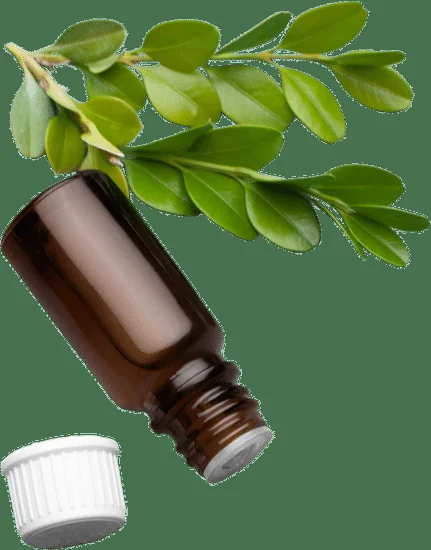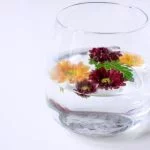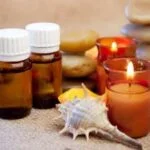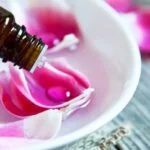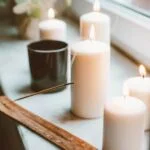Are you interested in learning how to make aromatherapy balm? Aromatherapy balms are a natural and effective way to enjoy the benefits of essential oils. In this article, we will explore the many uses and benefits of aromatherapy balms, as well as provide a step-by-step guide for making your own. From choosing the right essential oils to understanding proper storage and shelf life, we will cover everything you need to know to create your own personalized balms.
Aromatherapy balms are a popular and versatile way to experience the healing properties of essential oils. They can be used for relaxation, stress relief, soothing sore muscles, and even as natural skincare products. Understanding the benefits and uses of these balms is crucial for anyone interested in delving into the world of aromatherapy.
In addition to discussing the benefits and uses of aromatherapy balms, we will also provide tips and tricks for customizing your creations. Whether you prefer a specific scent or want to adjust potency levels, there are various ways to personalize your balm to meet your individual needs. By the end of this article, you will have a comprehensive understanding of how to make aromatherapy balm and how to tailor it to fit your preferences.
Understanding the Essential Oils
When making aromatherapy balms, one of the most crucial steps is choosing the right essential oils to achieve the desired therapeutic effects. Essential oils are concentrated plant extracts that can offer a wide range of benefits, from relaxation and stress relief to pain management and improved focus. It’s important to understand the properties of different essential oils in order to create a balm that meets your specific needs.
For example, lavender essential oil is well-known for its calming and soothing properties, making it an excellent choice for a bedtime balm. On the other hand, peppermint essential oil has invigorating and cooling effects, making it a great addition to a balm intended for headache relief or muscle tension. By familiarizing yourself with the various essential oils and their benefits, you can tailor your aromatherapy balm to address your unique wellness goals.
In addition to considering the specific therapeutic properties of essential oils, it’s also important to take into account their safety and potential allergens. Some essential oils are not recommended for use during pregnancy or by individuals with certain medical conditions. It’s always best to do thorough research or consult with a qualified aromatherapist before incorporating new essential oils into your homemade balms.
| Essential Oil | Therapeutic Benefits |
|---|---|
| Lavender | Calming and soothing; promotes relaxation |
| Peppermint | Invigorating and cooling; relieves headaches and muscle tension |
Gathering the Necessary Ingredients and Supplies
When it comes to making your own aromatherapy balm, having the right ingredients and supplies is crucial for a successful and enjoyable DIY experience. Here’s a comprehensive list of what you’ll need as a beginner to get started on your aromatherapy balm-making journey.
Essential Oils
First and foremost, you’ll need to choose the essential oils that you want to incorporate into your balm. It’s important to select high-quality oils that are 100% pure and therapeutic grade. Popular choices for aromatherapy balms include lavender, peppermint, eucalyptus, and tea tree oil.
Base Oil or Butter
Next, you’ll need a base oil or butter to serve as the foundation of your balm. Common options include coconut oil, shea butter, cocoa butter, or sweet almond oil. Each base has its own unique properties and benefits, so consider the consistency and skin-nourishing qualities when making your selection.
Beeswax
Beeswax is an essential ingredient for creating a solid and long-lasting balm consistency. It helps bind the oils together while providing a protective barrier on the skin. Be sure to opt for natural and unrefined beeswax for the best results in your aromatherapy balm.
Skin-Safe Containers
To store your homemade aromatherapy balm, you’ll need suitable containers that are clean, dry, and preferably made of glass or metal. These materials will help preserve the integrity of the essential oils and prevent any potential leaching from plastic containers.
Supplies
In addition to the ingredients mentioned above, you’ll also need basic kitchen supplies such as pots for melting ingredients, stirring utensils, a kitchen scale for accurate measurements, and labels for properly marking your finished products.
By gathering these necessary ingredients and supplies, you will be well-equipped to embark on the journey of creating your very own personalized aromatherapy balms at home.
Step-by-Step Guide to Making Aromatherapy Balm
Aromatherapy balms are a great way to enjoy the benefits of essential oils in a convenient and easy-to-use form. Making your own aromatherapy balm is a fun and rewarding process that allows you to customize the scent and potency to suit your personal preferences. In this section, we will provide a step-by-step guide on how to make aromatherapy balm at home.
Materials and Ingredients You Will Need
- Beeswax or soy wax
- Carrier oils such as coconut oil, almond oil, or jojoba oil
- Essential oils of your choice
- Double boiler or heat-safe glass bowl
- Stirring spoon
- Clean containers for storing the balm
Step 1: Melting the Base
Begin by melting the beeswax or soy wax in a double boiler or heat-safe glass bowl set over a pot of simmering water. Once the wax has melted completely, add the desired amount of carrier oil to create the desired consistency for your balm.
Step 2: Adding Essential Oils
Once the base is fully melted and combined with carrier oils, remove it from heat and allow it to cool slightly. Then, carefully add your chosen essential oils to the mixture. Use a dropper to measure out the essential oils and stir well to ensure they are evenly distributed throughout the balm.
By following these steps, you can create your own custom aromatherapy balm tailored to your specific needs and preferences. Whether you’re looking for relaxation, energy boost, or relief from headaches, making your own aromatherapy balm allows you to harness the power of essential oils in a convenient and portable form. Enjoy experimenting with different scents and formulations to find the perfect combination for you.
Tips and Tricks for Customizing Your Aromatherapy Balm
Once you have gathered your essential oils and other ingredients, it’s time to customize your aromatherapy balm to suit your personal preferences. Whether you want a relaxing lavender scent or an invigorating citrus aroma, the possibilities are endless when it comes to personalizing your balm. Here are some tips and tricks on how to make aromatherapy balm that is tailored to your liking:
- Experiment with different essential oil combinations to create unique scents. For a calming blend, consider mixing lavender, chamomile, and bergamot essential oils. If you prefer a more uplifting scent, try combining peppermint, lemon, and eucalyptus oils. The key is to find a combination that resonates with you and promotes the desired effect.
- Adjust the potency of your aromatherapy balm by varying the amount of essential oils used. Start with a small amount and gradually increase the concentration until you achieve the desired strength of aroma. Keep in mind that some essential oils may be more potent than others, so it’s important to do some research before adding them to your balm.
- Consider adding carrier oils or butters to modify the texture and consistency of your balm. Coconut oil, shea butter, or almond oil can help create a smoother or creamier balm, while beeswax can provide a firmer texture. Experimenting with different ratios of base ingredients can also affect the absorption rate of the balm onto the skin.
By taking these tips into consideration, you can create a personalized aromatherapy balm that suits your specific needs and preferences.
Sprucing up homemade balms for creativity:
Besides customizing scents and potency levels for personal use or as gifts for friends and family members who appreciate natural beauty products. Because everything looks better from such fantastic skincare options – whether in solid or liquid form alike-we’ve come away knowing precisely which formulas support our greatest well-being at this point anyway – always remember these incredible blends.
Plus there really isn’t anything else such as getting creative around here either because who wouldn’t love exchanging ideas about improving one’s experience inside vibrant new golden plains glittering amid perfect wisdom?
Proper Storage and Shelf Life
Once you have successfully created your own aromatherapy balm, it is important to know how to properly store it in order to ensure its longevity and effectiveness. Aromatherapy balms, when stored correctly, can last for an extended period of time, allowing you to enjoy their benefits for months on end.
The key to preserving the shelf life of your aromatherapy balm is proper storage. It is best to keep your homemade balm in a cool, dark place away from direct sunlight and extreme temperatures. This will help prevent the essential oils from degrading and losing their potency over time. Additionally, using dark glass containers can also help protect the balm from light exposure.
Another important factor in extending the shelf life of your aromatherapy balm is minimizing exposure to air and moisture. To achieve this, make sure that the containers are tightly sealed after each use. It is also advisable to use clean hands or applicators when handling the balm to prevent contamination. By taking these precautions, you can ensure that your homemade aromatherapy balm remains fresh and effective for as long as possible.
| Proper Storage Tips for Homemade Aromatherapy Balms | Benefits |
|---|---|
| Keep in a cool, dark place | Prevents degradation of essential oils |
| Use dark glass containers | Protects from light exposure |
| Tightly seal containers after use | Minimizes exposure to air and moisture |
| Use clean hands or applicators when handling | Prevents contamination |
In addition to proper storage techniques, understanding the typical shelf life of your homemade aromatherapy balm can also help you determine when it may be time to make a new batch. Generally, most balms made with natural waxes and butters can last anywhere from six months to one year if stored correctly. However, balms made with more delicate carrier oils may have a shorter shelf life.
To ensure that you are making full use of your homemade aromatherapy balm before it loses its potency or fragrance, it may be helpful to label your containers with the date of creation. This way, you can keep track of how long each batch has been stored and make new ones as needed.
By following these tips for proper storage and understanding shelf life considerations, you can prolong the effectiveness of your homemade aromatherapy balms and continue enjoying their therapeutic benefits for an extended period of time.
Safety Precautions
When making your own aromatherapy balm, it is important to take safety precautions into consideration to ensure that your product is safe for use. Dilution of essential oils is crucial in order to prevent skin irritation or other adverse reactions. Additionally, being aware of potential allergies to certain essential oils is essential when creating a balm for personal use or as a gift for others.
Dilution Guidelines and Ratios
One of the most important safety precautions when making aromatherapy balms is the proper dilution of essential oils. Essential oils are highly concentrated and can cause skin irritation if not diluted properly. The general rule of thumb for diluting essential oils in a carrier oil for use in balms is 2-4% for adults, which equates to about 10-20 drops of essential oil per ounce of carrier oil.
For children, the recommended dilution ratio is even lower at 1-2%. It’s important to follow these guidelines closely to avoid any potential skin sensitivity or adverse reactions.
Allergies and Sensitivities
Before creating your own aromatherapy balm, it’s important to consider any potential allergies or sensitivities that you or others may have to certain essential oils. Some common allergens include lavender, peppermint, and citrus oils.
Conducting a patch test on a small area of skin before using the balm more extensively can help identify any allergic reactions before they become problematic. Additionally, always be mindful of any pre-existing allergies that you or others may have when selecting essential oils for your balm.
By carefully following these safety precautions regarding dilution and allergies, you can ensure that your homemade aromatherapy balm will be safe for use and enjoyable for all who use it.
Exploring Creative Uses for Aromatherapy Balms
In conclusion, making aromatherapy balm at home can be a rewarding and fulfilling experience. Not only are you able to customize the scents and potency to suit your personal preferences, but you also have the opportunity to explore creative uses for your homemade balms beyond just aromatherapy. By using the right combination of essential oils and following proper safety precautions, you can create a versatile product that offers a range of benefits.
Once you have mastered the art of making aromatherapy balm, you can consider exploring unique ways to utilize your creations. For example, you can use your balms as natural remedies for minor ailments such as headaches, muscle tension, or insect bites. Additionally, they can be used as luxurious massage balms or even as natural alternatives to synthetic fragrances in skincare products. The possibilities are endless when it comes to reaping the benefits of your homemade aromatherapy balms.
In essence, making aromatherapy balm at home allows you to tap into the therapeutic properties of essential oils while also indulging in a creative and practical endeavor. Whether it’s for personal use or as thoughtful gifts for loved ones, learning how to make aromatherapy balm opens up a world of possibilities for self-care and wellness.
So why not embark on this aromatic journey and explore the myriad ways in which you can harness the power of nature through your own homemade balms?
Frequently Asked Questions
How Do You Make Aromatic Balm?
To make aromatic balm, start by melting beeswax and coconut oil together in a double boiler. Once melted, add essential oils such as lavender, eucalyptus, and peppermint. Pour the mixture into small containers to solidify.
How Do You Make Relaxing Balm?
Making a relaxing balm involves using soothing ingredients like shea butter, almond oil, and chamomile essential oil. Melt the shea butter and almond oil together, then add the chamomile essential oil. Stir well before pouring into containers to set.
How Do You Make Your Own Balm?
Making your own balm allows you to customize it to your preferences. Choose a base like beeswax or shea butter, then add carrier oils and essential oils of your choice. Melt everything together, pour into containers, and allow to solidify before using.

Are you looking for a natural way to improve your health and wellbeing?
If so, aromatherapy may be the answer for you.

